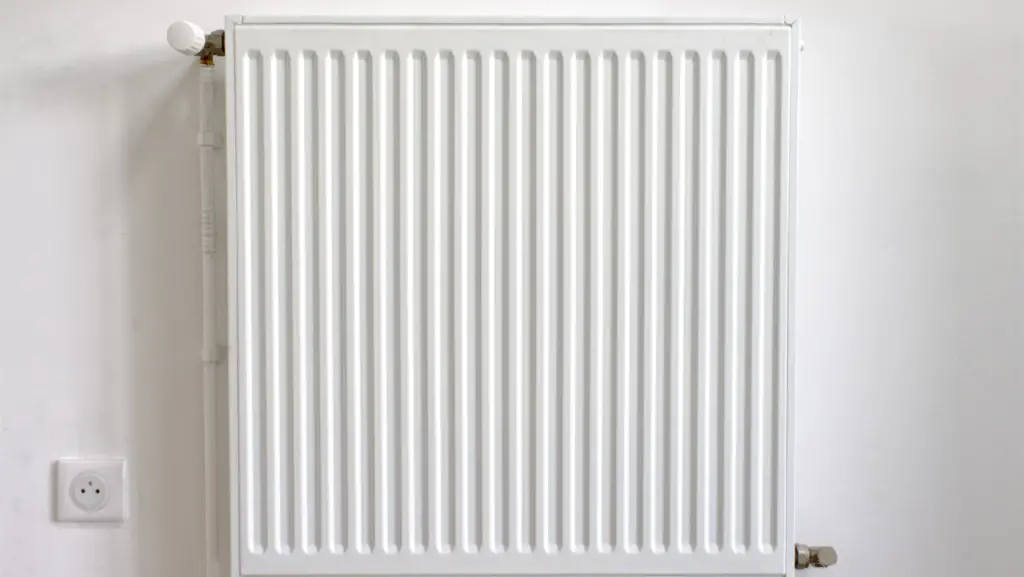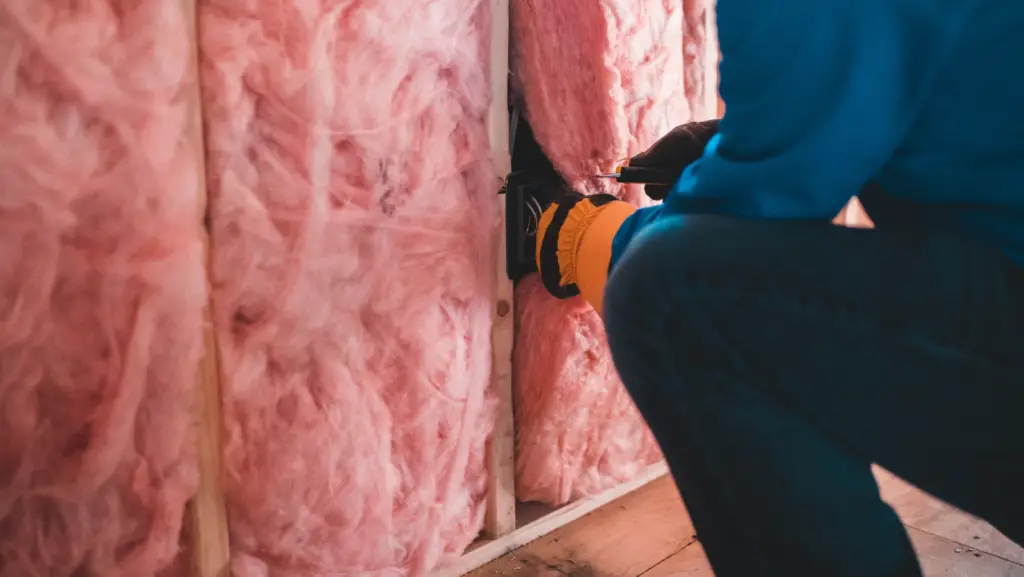Often, builders ask themselves: do I need a heater in the basement? Finally, the basement space is often only a workshop, storage, or hobby room because it may be colder.
But a word of caution: keep in mind that you want to expand the cellar later on, maybe even for a guest room or office, and then heat it. And in a workshop, as well, it should not be in the winter, too cold.

Here we explain what matters in the basement expansion and show various heating solutions.
Contents
- 1 Option 1. Ductless heat pump
- 2 Option 2. Underfloor heating system
- 3 Option 3. Extending your existing ductwork
- 4 Option 4. Electric space heaters
- 5 Option 5. Use baseboard heaters
- 6 Option 6. Portable heat pumps
- 7 Option 7. Wall heaters
- 8 Option 8. Stoves
- 9 Option 9. Traditional fireplace
- 10 Option 10. Insulation
- 11 Why should you heat the basement?
- 12 Will heating your basement keep your house warmer?
- 13 The heat helps fight humidity
- 14 The heating power must match
- 15 The reasons for being chilly in the cellar
- 16 The heating expert helps
- 17 Frequently asked questions:
- 18 Final thoughts
Option 1. Ductless heat pump
If you’re looking for the most energy-efficient heating method, a ductless heat pump might be one of the unfinished basement heating options in a cold climate. Ductless mini-split systems work through the power of heat exchanger coils, which move warm air from one location (the indoor air handling unit) to another (the outdoor unit).

They consist of two main components: an air handler (the indoor unit) mounted to the basement walls or in a basement ceiling, and a condenser, the outdoor unit for gathering thermal energy from the outside. These two units are then connected with a refrigerant line set that goes through the exterior wall of your basement.
During the cold months of winter, a mini-split system will pull in warm air from outside through the condenser and send it into the indoor unit, while during the hot summer months, the air handler will pull hot air out of the room and replace it with cooler air, providing your basement with ice-cold air conditioning.
The main advantages:
- No ductwork: It’s in the name! Many older homes have no ductwork, making mini splits a great basement option.
- Easy and quick to install: Mini-split systems are typically a breeze to install quickly in just about any location for your basement room.
- Energy-efficient design: Mini-split systems are 20-40% more efficient, saving you money on energy bills than ducted systems.
- Cost-effective: Mini-split systems tend to be much cheaper than central air units.
Option 2. Underfloor heating system
Radiant floor heating comes with a lifetime guarantee and requires next to zero maintenance. You can use smart Wi-Fi thermostats or programmable thermostats to get the most out of your heating system.

There are two basic types of radiant floor heating:
- Electric radiant floor heating typically consists of electric heating cables built into the floor. Electric radiant floor heating systems use electrical resistance to generate heat that is then radiated to the solid objects in a room.
- Hydronic radiant floor heating works by running hot water through tubing installed on the floor space and is heated by a boiler, water heater, or geothermal. The hot water flowing through the radiant heating system is between 122 °F to 176 °F, which means that it can be safely touched, and this temperature can be lowered further.
The process of installing radiant floor heating might be difficult, but it gives you peace of mind. With radiant heating, you get none of the typical worries: hot surfaces, sharp edges, and decreased air quality.
Underfloor heating works with all types of floor covering, giving you total design freedom: whether it’s laminate, wood, tile, carpet or stone, or just about anything else. Underfloor heating is an option for you.
Option 3. Extending your existing ductwork
If you want to avoid purchasing additional equipment to heat your cold basement, just extend your existing HVAC system. It is one of the ways to heat your basement that supplies heating and air conditioning from a central unit via ductwork and is controlled by a thermostat.

You can set the thermostat to distribute an even temperature throughout the day to keep your home comfortably cozy. Programmable thermostats also allow the heating to turn on 30 minutes before you get home so that the house and basement are warm for your arrival, but you are not wasting energy heating your home while you are out.
But before extending ductwork, consult an HVAC professional to avoid any hazardous connections or exposing wiring.
Option 4. Electric space heaters
Electric space heaters are portable space heaters and don’t require big spaces for installation. No storage of coal and firewood, no chimney to be constructed, and no extra heat insulation are required.

They don’t require skilled people for operation and maintenance. An electric space heater could be the best basement heating option for your basement in the cold weather.
If you follow a few basic rules, there is no reason why your electric space heater shouldn’t be safe:
- Distance: Don’t run the space heater around anything flammable
- Not a dryer: Do not use an electric space heater to dry your clothes.
Option 5. Use baseboard heaters
Baseboard heaters offer heat through an electrical heating element, similar to how a toaster heats up. They sit about three-quarters of an inch above the basement floor, allowing heat and air to circulate to the unit.
One of the best features of electric baseboard heaters is their 100% efficiency. This means that hundred percent of the electricity consumed by the baseboard heater produces heat.

The baseboard heater is powered by electricity rather than fossil fuels. There is a quiet heating option, with no blowing or gurgling noises that you might get with ducting or a furnace.
There are two common types of baseboard heaters as basement heating options:
- The convection baseboard heater draws in cold air that collects near the floor, warms it over electrically heated metal fins, then allows the heated air to rise back into the room. This can be problematic for people with allergies, as it can spread hair, dust, and other allergens.
- A hydronic baseboard heater uses heated liquid (usually water, but sometimes oil) to distribute radiant heat in a room. It doesn’t cycle on and off as much as other heating systems. It decreases your overall energy consumption.
Option 6. Portable heat pumps
A portable heat pump is a device that extracts heat from the environment, upgrades it to a higher temperature, and moves it into your basement. They have simple and excellent controls, keeping your basement very comfortable at all times – never too hot or too cold.

You can easily set your suitable comfort level. This basement heating option requires minimal maintenance and has a longer lifespan than conventional boilers. It can heat and cool a finished basement so that you can replace an air conditioner and a space heater with a single unit.
Being energy efficient and safer than radiant space heaters, portable heat pumps make the perfect basement heating options.
Option 7. Wall heaters
Wall heater saves up to 50% on heating system costs compared to conventional heating options, which is great for the environment.
The wall heaters can be easily mounted on your basement walls like a picture and consume nearly a thousand watts less than standard heating options while still maintaining a uniform temperature in the basement.

They are simple, convenient, streamlined, easily removed, unpacked, and can be powered by gas or electricity.
- Gas wall heaters whether vented or unvented operate with natural gas or propane. Some ventless options are more suitable to heat a basement.
- Electric wall heaters are ideal ways to heat your basement because they can either be installed inside the wall or mounted onto it. Also, they have smart thermostats with automated features and timers.
Option 8. Stoves
Pellet stoves are a more convenient way to heat your basement because they are very efficient. Wood pellet stoves use wood pellets as fuel, which are made from other wood waste.
Without requiring any electrical connection, the wood pellet stove circulates hot air with a small fan. They produce less pollution and are certified by the EPA and are likely to be in the 70% to 83% efficiency range.

However, you need a carbon monoxide detector with a wood pellet stove, because any pellet stove may produce carbon monoxide in small quantities when burning pellets.
This type of basement heating option will limit the heat loss from the entire basement, saving both money and energy.
Option 9. Traditional fireplace
From nostalgia to a source of heat, there are many reasons for installing a fireplace in the basement. It provides essential warmth in winter, and one can control the intensity of the fire to their preference.

Popular types of fireplaces as basement heating options:
- A wood fireplace provides more than warmth; it provides comfort, and nostalgia, and helps create memories that will last a lifetime. These types of fires have no negative impact on indoor air quality and can reduce your annual greenhouse gas emissions by almost 30%.
- A gas fireplace is relatively inexpensive to operate and produces intense heat. Without the hassle of burning wood, it emulates the look of a traditional fireplace. You do not need to have firewood and clean out the ashes.
- An electric fireplace does not require a chimney or special venting, meaning they do not lose heat through them. It heats more safely and efficiently. Because of their practicality and low cost, they are a good choice for your basement.
Due to easy operation and low maintenance, many homeowners prefer natural gas fireplaces.
Option 10. Insulation
If you want to stop heat loss, consider insulating your basement floor and walls. Use foam insulation to fill in all the gaps and spaces thoroughly if you have concrete walls. The material is also water-resistant, so it’s less likely to retain moisture.
Insulating windows and ducts as cold air enters your basement is important. It gives you the best protection against moisture and air infiltration.

Fiberglass is a common alternative to foam insulation, which is suitable for wood-framed walls. But following proper installation guidelines is important to avoid skin and the respiratory system. During installation, wear protective gear such as gloves, goggles, and a mask.
Basement flooring options are also at a great value. That provides durability and comfort and keeps your feet warmer.
Before using radiant floor heating, install it, then insulate your floor space. If there are large gaps and holes, use rigid foam, plywood, or drywall to cover them.
Why should you heat the basement?
Whether it’s a finished or unfinished basement, you should certainly heat it for the reasons of better living space, poor insulation, and sunlight.
- Better living space: Heatingyour basement you can convert it into additional living space and utilize it as a children’s playing area, a TV room, a bedroom, or a home office to get the most out of your home’s square footage.
- Poor insulation: Because of poor insulation, heat travels from warm to cold, making the basement cold. If you want to keep your home warmer and save money on energy costs, heating is a suitable solution in this case.
- Sunlight: Unfortunately, most basements have no direct sunlight. To prevent mold, run a heater to warm the air in rooms without natural light.
Will heating your basement keep your house warmer?
Heating your basement helps keep warmer your whole house and keeps you from losing energy. It can minimize the loss of heat from upstairs and make your basement usable.

As you know, heat rises and warms the home’s upper levels, creating much more comfort. Leaving the basement colder makes your feet cold and forces the heating system to work harder.
The heat helps fight humidity
The subsequent expansion is only one aspect that favors a heating system in the basement. It is important even if you’re going to hang the laundry in the finished basement.
Drying increases the humidity in the cold basement and quickly turns into musty air or even mold can cause.
Only proper ventilation in the basement is not enough then. You have to heat the air in winter to control humidity.
The heating power must match
When choosing the best basement heating options, you should pay attention to sufficient thermal power. Only then the heating device will be able to maintain a comfortable temperature.
Experts believe 90 to 140 watts of power per square meter of living space are sufficient in uninsulated basements. In insulated basements, 60 to 80 watts of power per square meter of living space is sufficient.
The reasons for being chilly in the cellar
Simply the fact, that hot air rises and cold air falls in the cellar. There are also factors:
- No insulation
- No direct sunlight
As the basement is located underground, it is the best-insulated floor in your house. However, if your basement is always cold, it’s because the cold air is trapped.
The heating expert helps
In every basement, there should be a heating possibility or heating zones. Depending on the usage, you can decide, as a resident, how much energy you want to use for your finished or unfinished basement. In addition, you don’t need to turn on all radiators at full power.
If you would like to retrofit the heating system and find a basement heating solution, you can find out about a suitable heating contractor near you.
Frequently asked questions:
What is the most economical way to heat a basement?
Radiant heating is the most energy-efficient on the list, allowing energy savings over time. Their underfloor installation helps your finished basement maintain consistent temperatures and heat evenly throughout.
You can also consider space heaters that are easily plugged into a wall if you are looking for a budget-friendly option. They are small portable heating devices that might be a more cost-effective solution.
What is the cheapest way to keep a basement warm in the winter?
Baseboard heaters might be the most efficient and cheapest way to heat your basement. They use convection to heat cold air and allow hot air to fill the basement. To fully warm up, they take about 30 minutes.
What is the cheapest way to heat a cellar?
The cheapest way to heat a cellar also depends on your geography and natural gas prices. Gas can also be used for other appliances, helping save money. A gas fireplace is more energy-efficient and much cleaner.
To learn more about best ways to heat a basement, check out this post here.
Final thoughts
As you can see, there are different basement heating options, from the electric radiant heater to the natural gas fireplace.
Before selecting the best option for your basement, find out how frequently you use your basement or if it’s possible to extend your existing HVAC system.
Ultimately, it’s important to follow all the safety guidelines on the installation of hydronic radiant floor heating or another home electrical system to heat floor space in your basement.
If you need to read about how to clean dusty concrete basement floor, please read our article.


